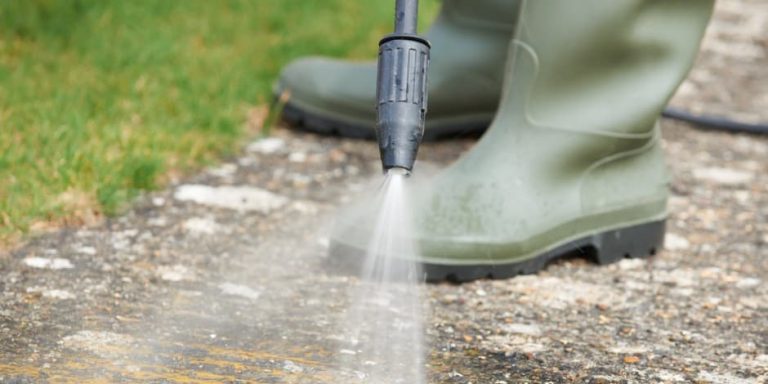
Power washing is a fast and effective way to clean surfaces, but in areas facing water scarcity, it becomes a controversial practice. As drought conditions intensify across the globe, particularly in the American Southwest, Australia, and parts of Africa and Asia, water usage is under intense scrutiny. 🌞🚱
In this article, we’ll explore how power washing can be done responsibly in drought-prone regions. By adopting conservation strategies, contractors and homeowners can maintain cleanliness without wasting precious water or violating local regulations.
🔥 Understanding Drought and Water Restrictions
Drought-prone regions typically experience:
- Prolonged dry seasons with little or no rainfall
- Declining groundwater levels and reservoir storage
- Increased evaporation rates due to higher temperatures
- Government-enforced water use restrictions
In these conditions, cities often limit:
- Lawn watering and car washing
- Pressure washing of sidewalks, buildings, and driveways
- Non-essential outdoor water use during peak hours
Violating these restrictions can result in fines, public backlash, and permanent water bans for businesses. 🛑💸
🚿 The Water Usage Problem
Traditional power washers can use 2 to 5 gallons of water per minute (GPM). A 60-minute wash could consume:
- Up to 300 gallons of potable water
- The equivalent of a household’s daily indoor usage
- Enough water to supply 3 people for an entire day!
In drought-prone regions, every drop matters. That’s why adopting conservation practices isn’t just ethical—it’s essential. 💧⏳
✅ Water-Saving Strategies for Power Washing in Arid Climates
1. 💦 Use Water Reclamation and Recycling Systems
Water reclaim units capture runoff, filter it, and reuse it in real-time. These systems:
- Reduce overall water consumption by up to 80%
- Prevent runoff from entering storm drains
- Help comply with city regulations
Reclaim systems are especially valuable in commercial and industrial settings with large surface areas.
Browse Amazon Here For Top Rated Power Washers And Accessories
2. 📏 Limit Job Scope and Frequency
Don’t wash entire surfaces if only sections are dirty. Offer spot cleaning or smaller-scale packages:
- Stains, oil spots, or bird droppings only
- High-touch entry areas, not whole facades
- Driveways in sections instead of full surfaces
This reduces wash time and saves water without sacrificing customer satisfaction. ✅🚗
3. 🕒 Adjust Wash Timing
Avoid midday washing in arid zones. Hot, dry air increases evaporation, causing you to:
- Use more water
- Wash the same area twice
- Increase your environmental footprint
Best practice: early morning or after 6 p.m., when temps are lower and evaporation is minimized. 🌅
4. 🌿 Use Eco-Friendly, High-Efficiency Equipment
Invest in:
- Low-GPM power washers (2.0–2.5 GPM instead of 4.0+)
- Foam or pre-soak applicators that reduce rinse time
- High-efficiency nozzles that concentrate flow
- Cold-water systems to avoid unnecessary heat waste
These upgrades pay for themselves over time in water savings and compliance benefits.
5. 📋 Educate Clients on Drought-Conscious Cleaning
Help your clients understand:
- Why full-service washes may be limited
- How spot treatment and soft washing can be just as effective
- The importance of scheduling outside drought alert periods
Transparency earns trust and positions you as a responsible service provider. 🧠👷
🏘️ Residential Tips for Arid-Region Homeowners
For homeowners in drought-stricken regions, follow these tips:
- 🧼 Sweep and scrub with a broom or mop before washing
- 🌧️ Collect rainwater (where legal) in barrels for pre-rinse
- 🧽 Use a garden sprayer for small stains instead of full washes
- 🛑 Avoid washing if water use restrictions are in place
Remember: A slightly dusty driveway is better than wasting hundreds of gallons of clean water.
🏛️ Municipal Guidelines and Regulations
Many drought-prone regions now require:
- Special permits for commercial pressure washing
- Runoff containment measures
- Reclaim system use or wastewater recovery
- Public notification before large-scale washing
Examples:
- Las Vegas, NV restricts power washing to once a month for residential users
- Cape Town, South Africa banned all outdoor washing during Day Zero preparations
- Phoenix, AZ mandates use of reclaim systems for commercial sidewalks
📌 Always check local guidelines before operating during dry seasons.
🌍 Environmental and Community Impact
Irresponsible water use erodes public trust and contributes to:
- Overdrawing of aquifers
- Declining river flows
- Strain on agricultural and firefighting water supplies
- Long-term ecological degradation
On the flip side, contractors who operate sustainably in dry climates are:
- More likely to gain long-term clients
- Positioned as community-minded businesses
- Less likely to be fined, cited, or banned
♻️ Conservation = smarter business.
🧠 Final Thoughts
Power washing in drought-prone regions isn’t about stopping altogether—it’s about doing it smarter. By embracing water-saving technologies, modifying your cleaning practices, and following local guidelines, you can maintain high standards without sacrificing the environment.
When water is scarce, responsibility isn’t optional—it’s essential. 💧🏜️
Clean with care. Wash with purpose. Save every drop. 💙
Browse Amazon Here For Top Rated Power Washers And Accessories






